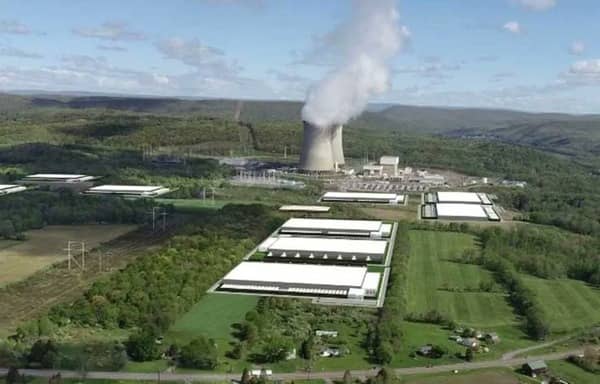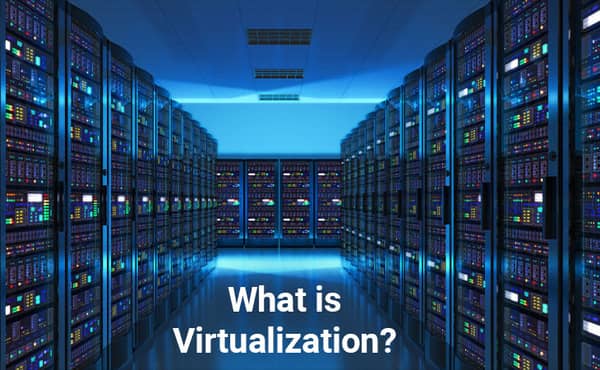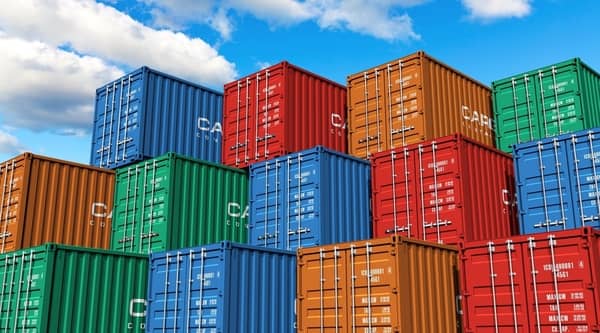
Will Small Nuclear Reactors Soon Power Data Centers Operations?
February 23, 2023
What Is Digital Dust?
March 14, 2023Containerization is a method of virtualization that allows users to run applications in isolated user spaces that are called containers. This is done all on the same operating system without affecting the operating system itself. Virtualization and containerization can be beneficial for several different reasons. This article discusses these terms and why they’re important for various entities.
What Is Virtualization?
Since containerization is a form of virtualization—let’s go over what virtualization is. Virtualization can help users with several different things. In the basic sense of the word, virtualization allows users to simulate the existence of physical hardware by using software. Virtualization gives users a virtual computer system by using shared resources.
Virtualization allows users and organizations to run several different operating systems, programs, and applications on one server without harming or affecting the other things running on the same computer server. This allows for better efficiency and scalability.

Virtualization is made up of several different components, which include a VM or virtual machine and a hypervisor. A VM is a virtual representation of a physical computer. It allows users flexibility as companies can create multiple virtual machines on a single computer. This is done through what is called a hypervisor.
A hypervisor is a software layer that allows various operating systems to run together while sharing the resources from a single machine. Hypervisors assign a portion of the physical machine to the virtual machines. This includes computing power, memory, and storage.
There are also several different types of virtualization, including storage virtualization, server virtualization, application virtualization, and desktop virtualization. Storage virtualization gives businesses multiple isolated storage solutions on one storage element. Server virtualization allows users to run multiple operating systems on a single server. Application virtualization allows users to access desktop applications remotely through a browser or cloud interface. Lastly, desktop virtualization allows remote workers and satellite offices to set up nearly 100 desktops on every virtual desktop server. It gives companies an efficient way to manage systems in many different locations.
What Is Container Virtualization?
Virtual Machines (VMs) and Containers are two technologies that aim to achieve virtualization in different ways. VMs are known as “hardware virtualization” since it happens at the hardware level. As mentioned earlier, hypervisors help make virtualization happen at the hardware level. This includes storage, processors, RAM, cards, and more. All of these aspects are being virtualized by the hypervisor.
Containers also aim to achieve virtualization, but by different means. Containerization also has several different steps to achieve virtualization. The hardware communicates with a kernel under a Host Operating System, which controls all of the various containers. Users can run dozens of containers on one operating system. This is why containerization is known as “operating-system-level virtualization” because the virtualization happens at the operating system level. At the same time, virtual machine virtualization happens at the hardware level.

What Are the Differences between VMs and Containers?
The type of isolation happening with these two types of virtualization is also different. Virtualization through Virtual Machines, users are attaining isolation of machines. In virtualization through containerization, users are attaining isolation of the machine.
Accessing these resources also differ through the different virtualization processes. Through a hypervisor, we generate different machines from one server, where most of the interaction of resources happens. Users are interacting with what feels like the hardware but is being managed by the hypervisor to appear as hardware.
Regarding containerization, several different features are being used as points of access. Two of the main features of the Linux kernel allow for the illusion of isolation of processes. The first one of these is namespaces, which allow the customizing and separating of the container of its operating system. The second one is the C groups, which is what allows for monitoring and metering of the resources. This allows for the various groups not to affect the overall system. Containerization gives users more control over resources.
The flexibility also differs between VMs and Containers. VMs give users virtually infinite flexibility in the hardware because it creates different machines out of the server; it allows users to choose how many processors they want the machine to have or much RAM they want it to have. VMs give users the flexibility to build the system that they want to build.
While virtual machines have virtually infinite flexibility, containers could be thought of as having infinite portability. Having a container defined in a single Docker file, the way containers are built isn’t unlimited. Docker files have specific parameters that dictate how to build and run a container and also what libraries are needed for these containers to run. The benefit of this is that it can run on various machines and from just about anywhere. There are almost no hardware limitations when using containerization as opposed to the more common virtual machine type of virtualization.

What Are the Benefits of Containerization?
Besides the portability that containerization offers, there are other ways users can benefit from using containers. Containers offer users specific types of agility. Developers can continue to use DevOps tools and processes to develop and enhance their applications quickly. Software running in a container is also more efficient by requiring less start-up time, allowing more containers to run on the same computing capacity. It is also faster by reducing server and licensing costs and at the same time, having no operating system to boot up.
Containerization also makes it easier to manage the various systems and applications many organizations use. Management systems such as container orchestration allow users to easily automate installing, scaling, and managing workloads and services. It also allows for better monitoring, logging, and fixing bugs in the system. And introducing new versions of applications is also more convenient.
Lastly, with all the various types of virtualization, system security is also improved. Isolating applications within containers can keep the app safe from other malicious code that could potentially affect the other containers or even the host system. Supplementary security can be applied to deter unwanted code or components from entering the container and even limit communication with outside resources.
Virtualization and containerization can give various companies and developers the ability to create and deploy applications fast and more securely than ever. It can be valuable for a large business that wants to make the most out of its data center servers. Consolidating and being more efficient with resources will benefit all growing businesses.

